AWS Certified AI Practitioner
Fundamentals of AI and ML
Basic AI Concepts and Terminologies
Welcome, students!
In this lesson, we introduce fundamental artificial intelligence (AI) concepts and terminologies that explain why AI matters and how it is reshaping industries such as healthcare, finance, and retail. This foundational knowledge is also key for certification paths like the AWS Certified AI Practitioner.
The Impact of AI-Powered Applications
AI-powered applications are revolutionizing various fields by enhancing efficiency, reducing operational costs, and accelerating decision-making. Companies are adopting AI solutions—from chatbots to automated data analysis—to serve as force multipliers, enabling smarter and faster business operations.
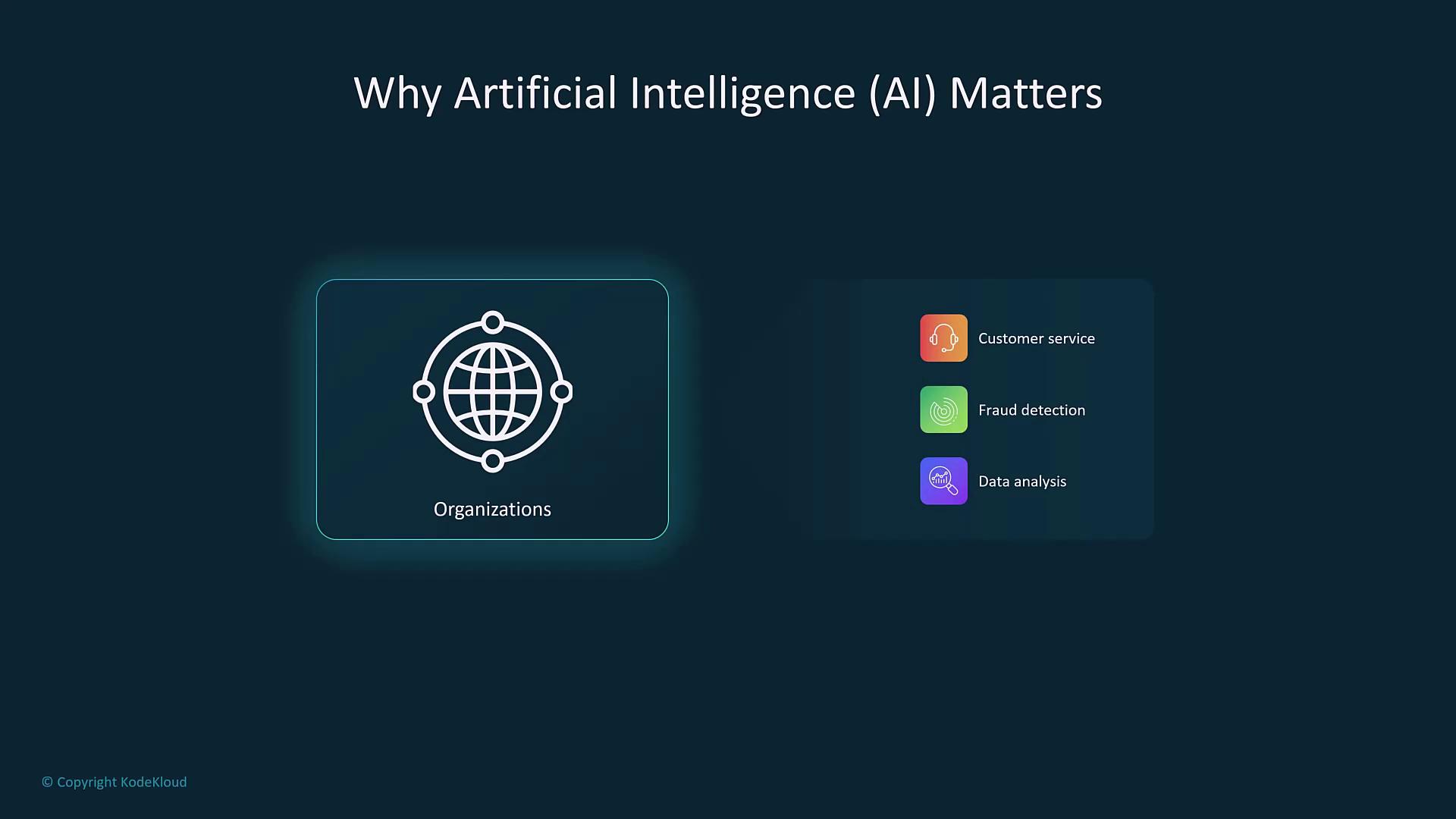
The ultimate goal is to enhance customer experiences while decreasing the human workload. This dynamic shift has spurred substantial demand for AI skills across industries.
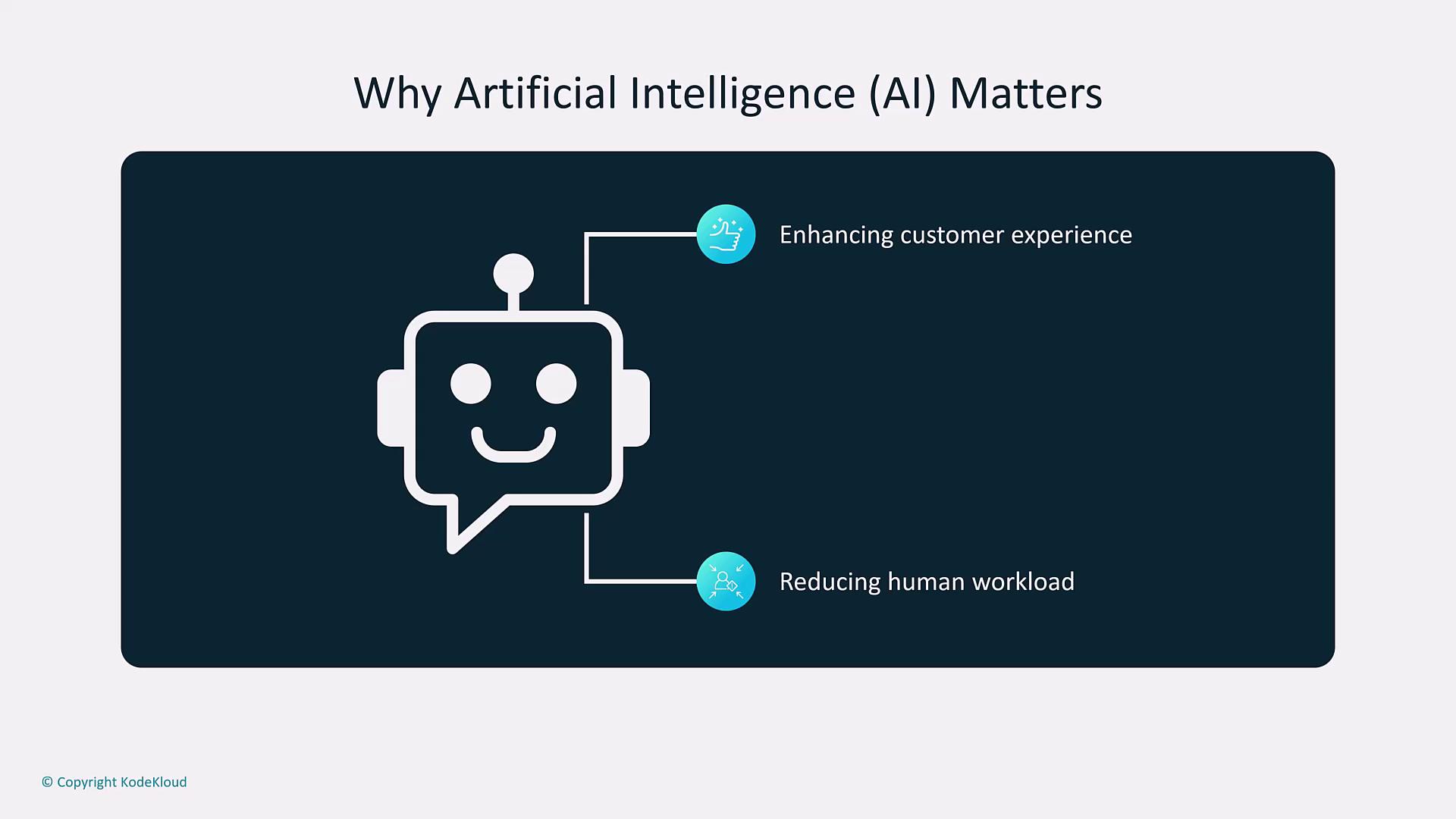
AWS and Its Role in Advancing AI
AWS is a major enabler of AI innovation with services such as SageMaker for machine learning and Rekognition for image analysis. These tools democratize access to advanced data processing and categorization, even for non-experts, breaking down previous barriers.
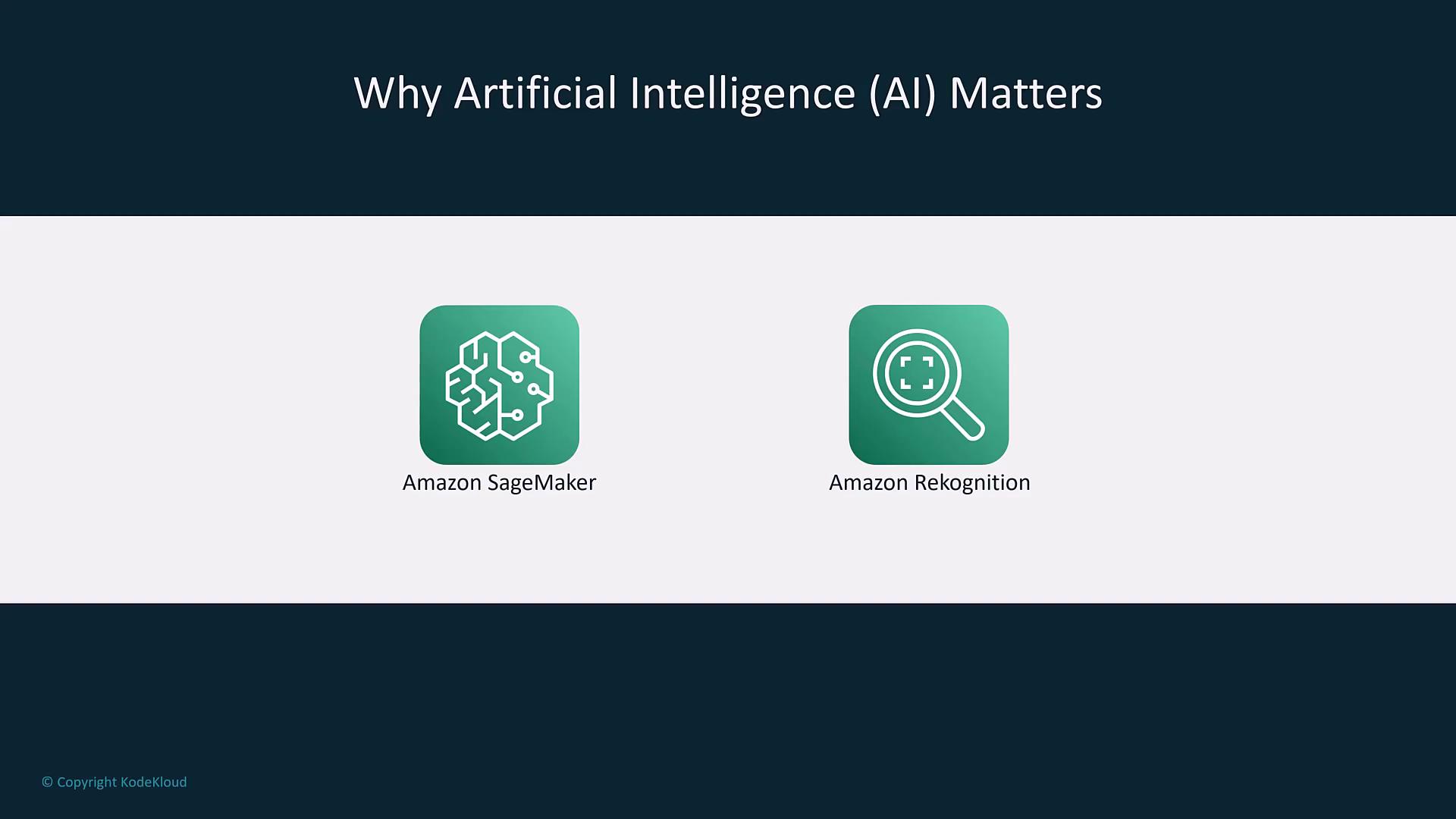
Transition to Machine Learning Systems
Since around 2015-2016, there has been a significant shift from traditional rule-based software to machine learning systems. Rule-based systems follow fixed logic—for instance, credit approval based on pre-set thresholds—whereas machine learning (ML) systems learn probabilistically from historical data, adapting to unseen scenarios.
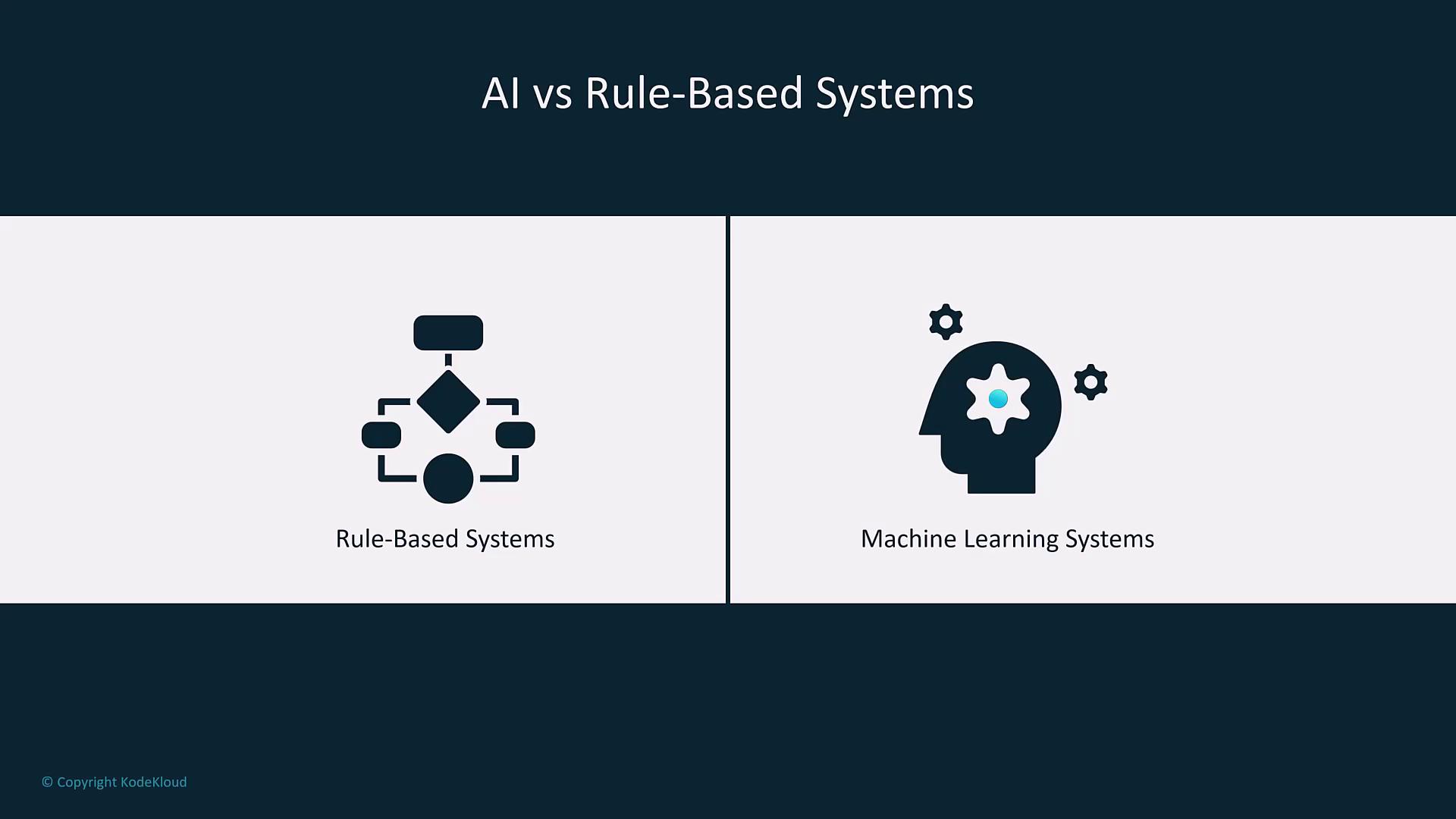
Note
While rule-based systems provide consistent outputs for straightforward tasks, machine learning offers superior capabilities for applications such as recommendations, predictions, and forecasts.
What Is Artificial Intelligence?
Artificial intelligence is a branch of computer science that creates systems capable of performing tasks that traditionally require human intelligence. Modern AI encompasses areas including visual perception, speech recognition, decision making, and language translation.
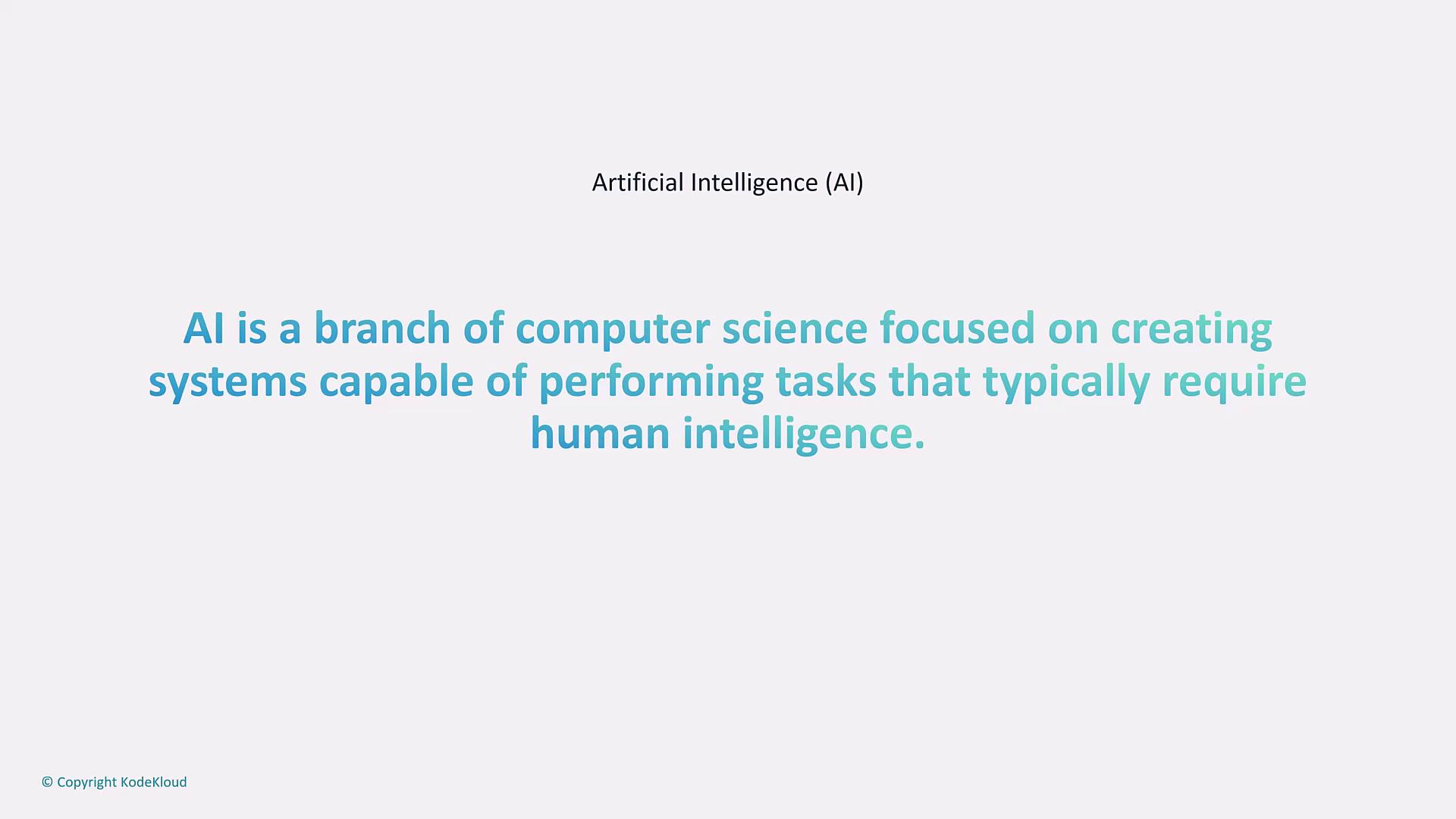
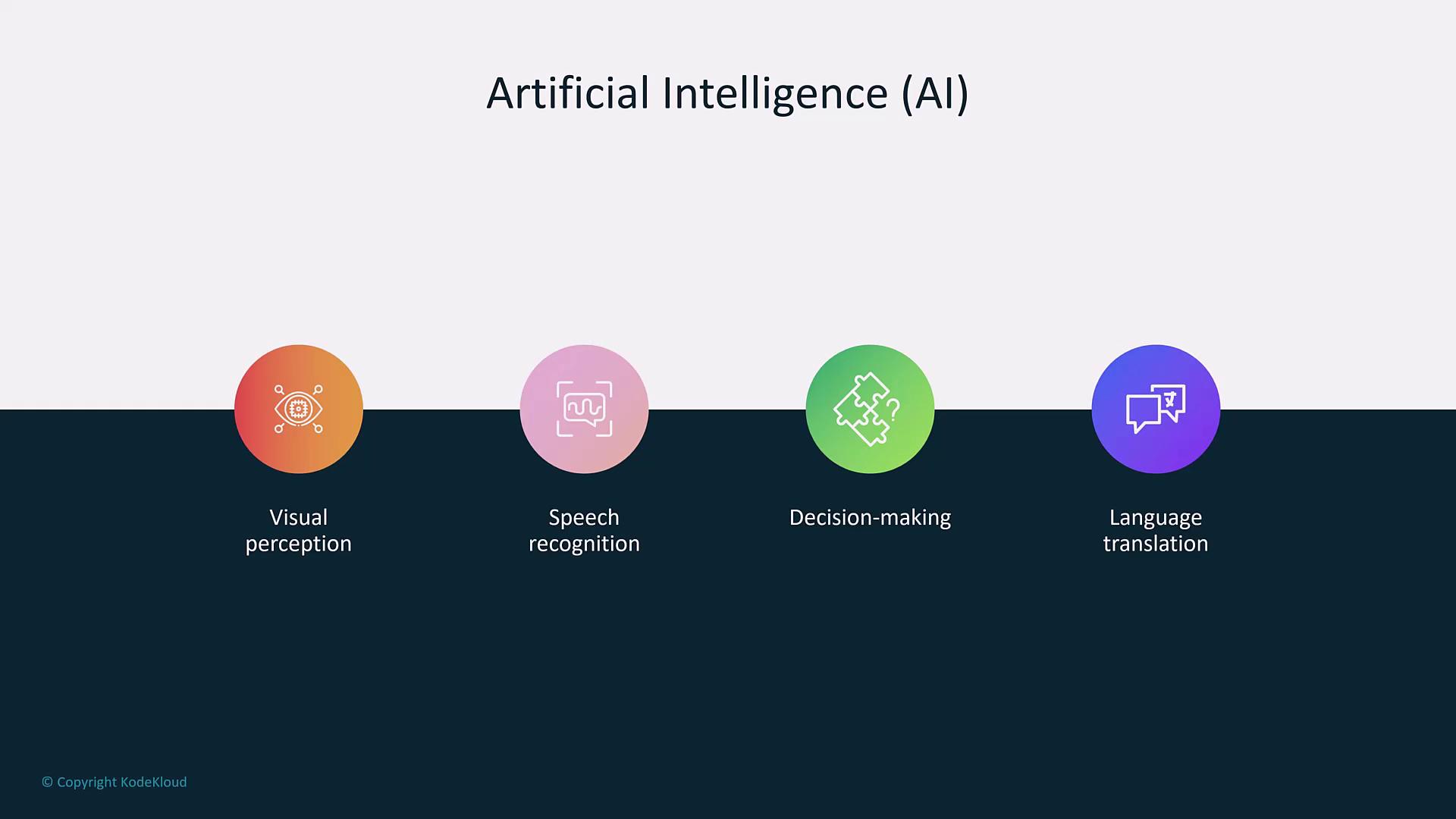
Exploring AI Subfields: Machine Learning and Deep Learning
AI can be broadly divided into subfields such as Machine Learning (ML) and Deep Learning (DL):

Narrow AI vs. General AI
- Narrow AI: Focused on specific tasks such as product recommendations or personalized interactions (e.g., AI assistants like Alexa, Siri, or personalized content on platforms like Netflix).
- General AI: Represents a theoretical system with broad problem-solving abilities akin to human intelligence. Although generative AI is making strides toward broader capabilities, true general AI remains a long-term goal.

General AI is distinct from generative AI, which primarily focuses on specific outputs. While generative AI is pushing boundaries towards flexible problem-solving, it is not yet synonymous with the expansive vision of general AI.

Machine Learning: Learning from Data
In practical applications, AI can perform binary classification tasks (e.g., identifying spam emails) or probabilistic predictions (e.g., forecasting market trends). This data-driven approach is known as machine learning.
ML employs mathematical algorithms and statistical models to identify patterns within both structured and unstructured data. Unlike traditional software that strictly executes programmed instructions, ML models continually improve as they process more data and receive feedback.
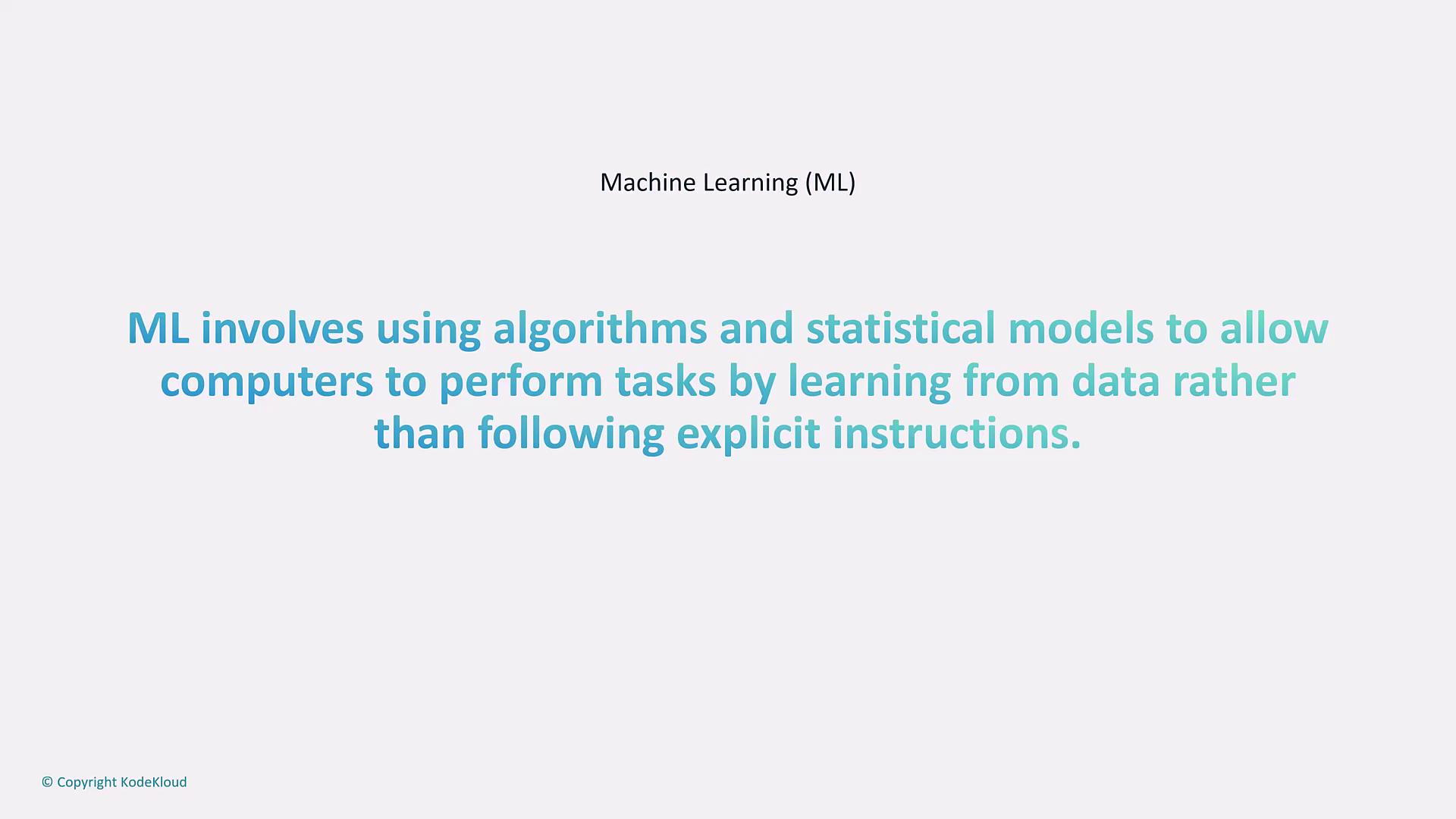
For example, to train an ML model to differentiate between cats and dogs, you would use accurately labeled images. The model learns key features such as ear shape, snout structure, and eye characteristics, applying this knowledge to classify new images. Services like Gmail utilize these models to filter spam, and chatbots evolve based on interaction feedback.
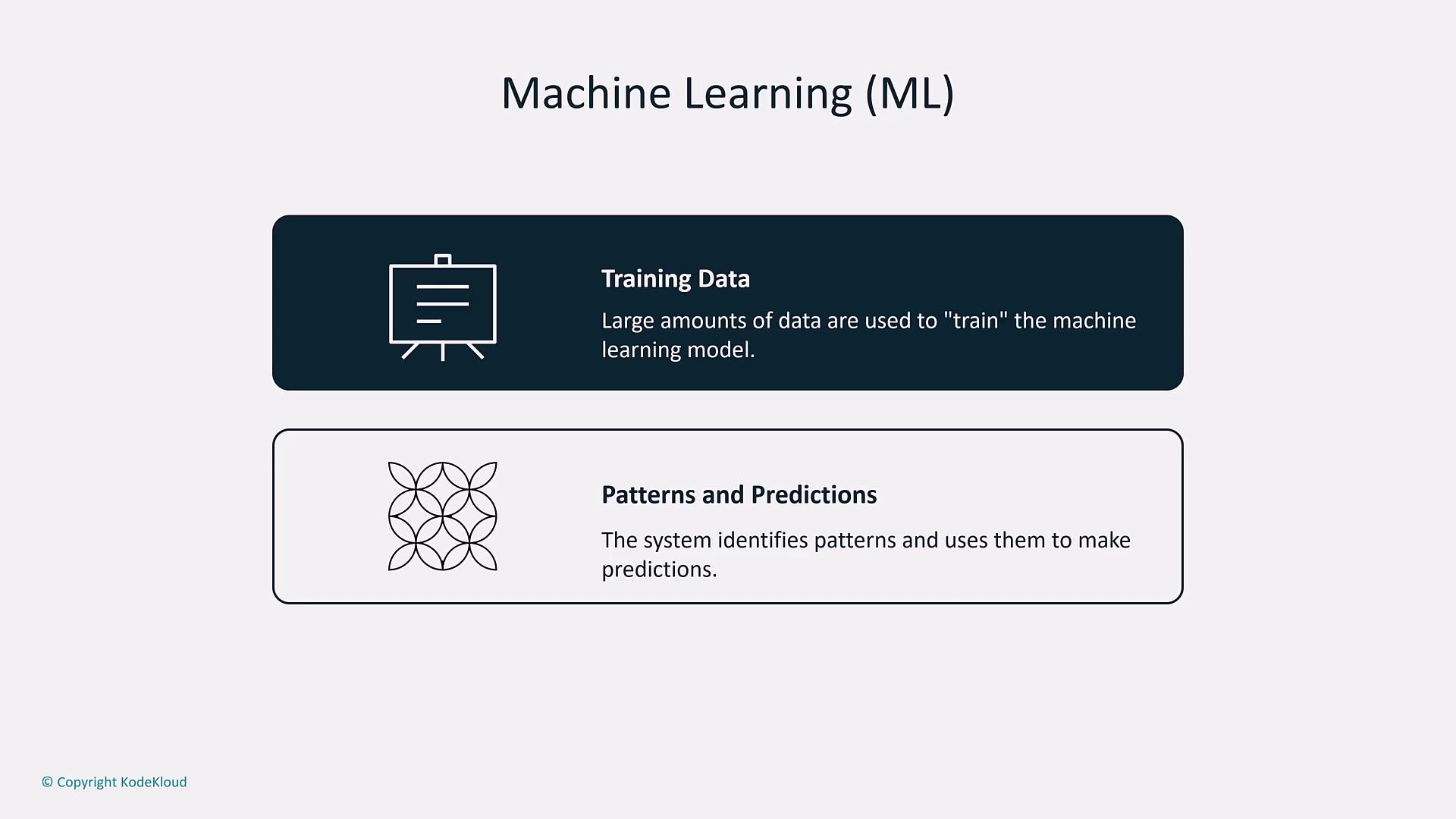
Deep Learning: A Specialized Subset
Deep learning, a subset of machine learning, leverages multi-layered neural networks. These networks, composed of interconnected artificial neurons, process data through multiple layers—similar to an intricately weighted decision tree—to solve complex problems.
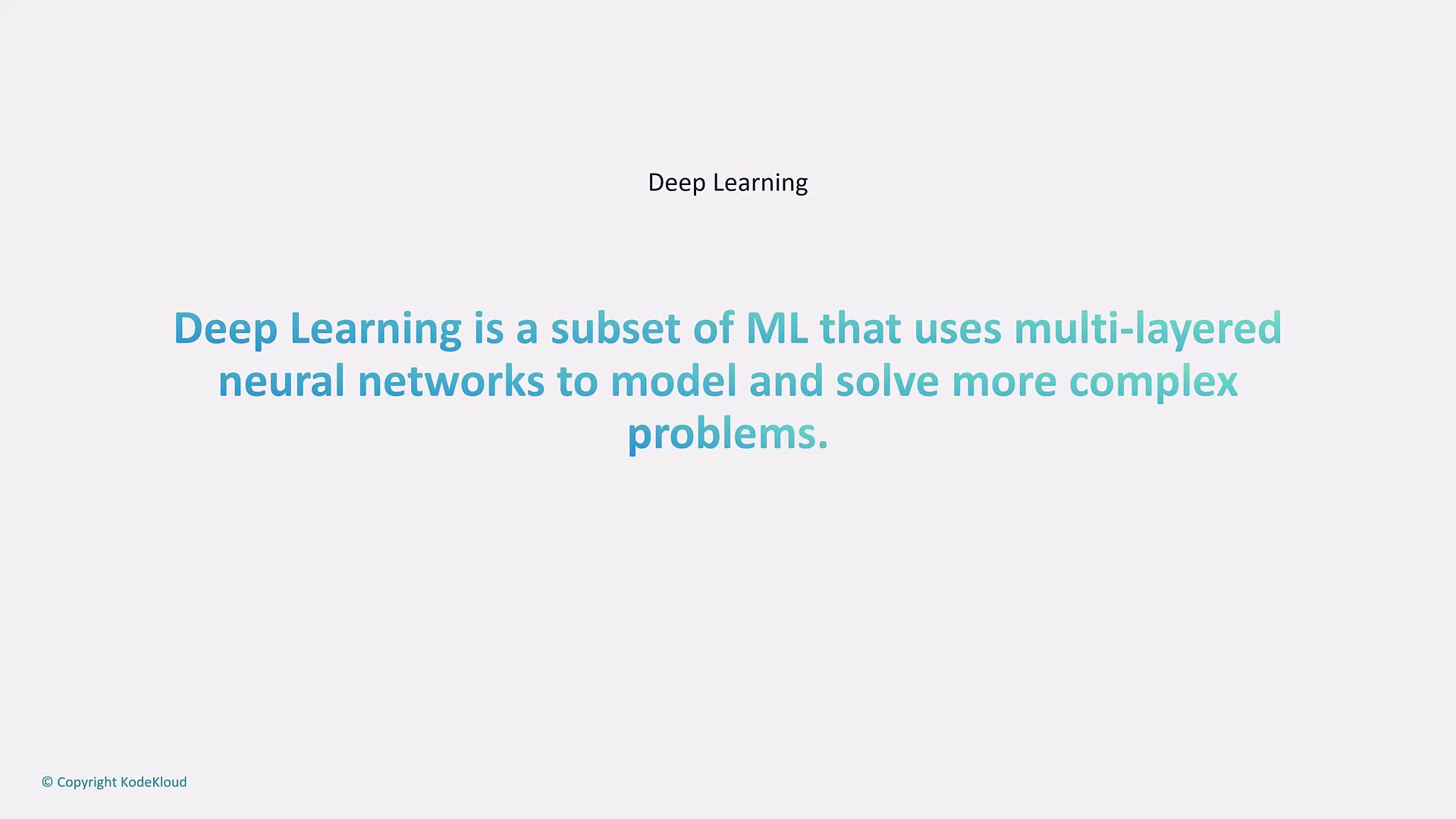
Consider an input such as a cat image: the neural network processes features like ear shape and eye structure across various layers, with each layer refining the confidence of the classification.
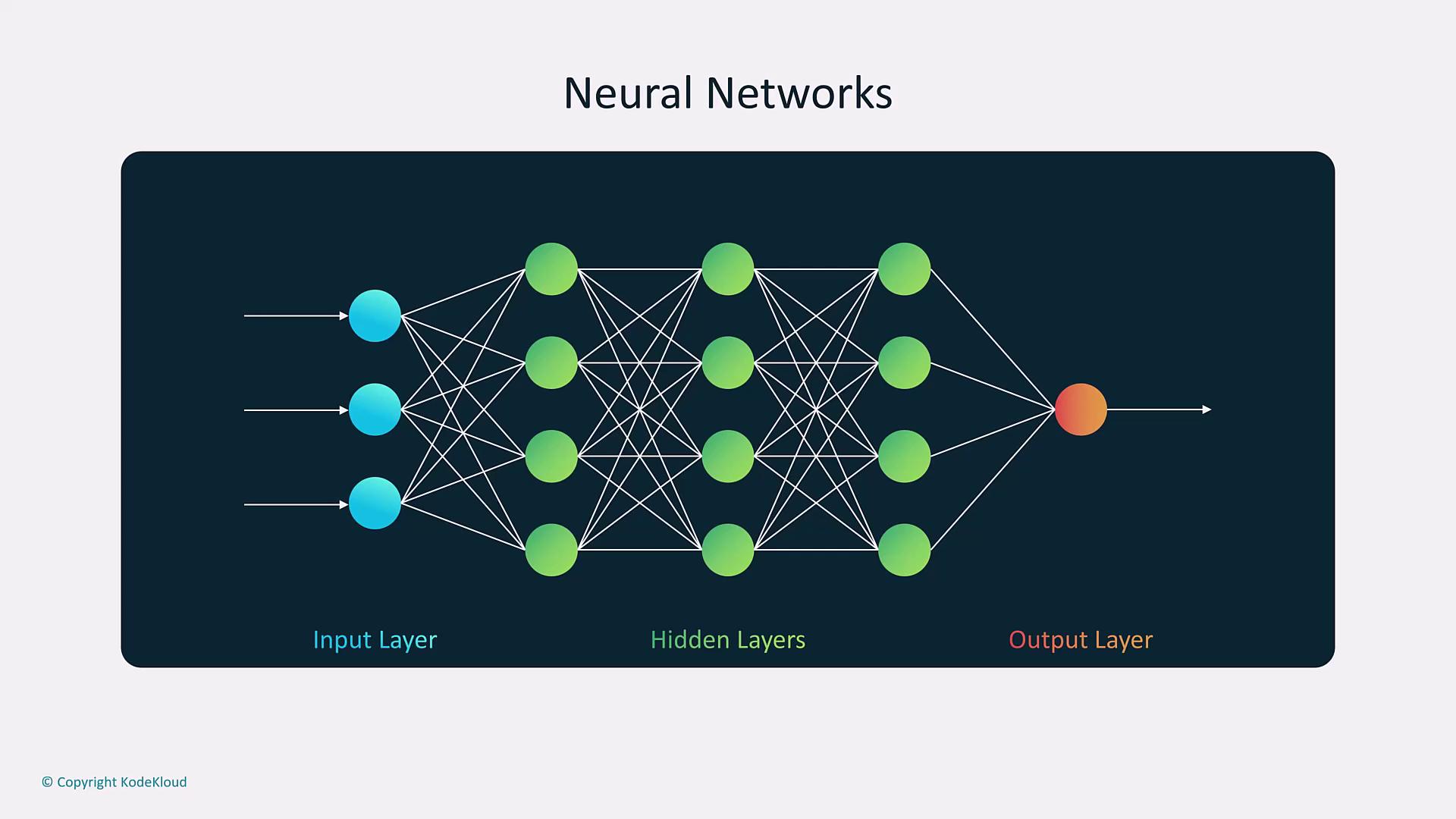
Deep learning is well-suited for complex tasks such as real-time voice assistance, facial recognition, and language translation, owing to its ability to analyze intricate patterns with high accuracy.
Summary
Artificial intelligence is an overarching field that includes machine learning and deep learning. In essence:
- AI refers to any technology that can replace or augment human effort.
- Machine learning utilizes algorithms to learn from historical data.
- Deep learning refines these capabilities using multi-layered neural networks that mimic human reasoning.

These concepts form the foundation of modern AI. Embrace the journey into AI technologies to unlock new possibilities in enhancing decision-making and automating complex tasks.
Thank you for reading this article. We look forward to guiding you through the next lesson on advanced AI techniques.
Watch Video
Watch video content